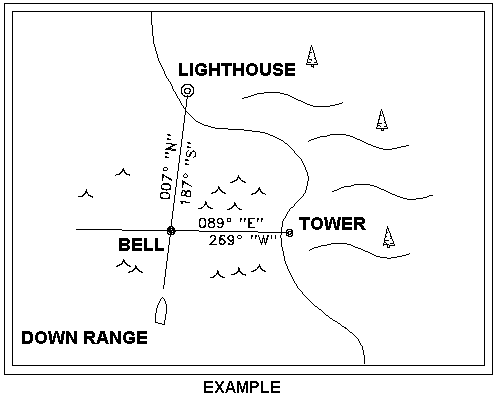Richie Compass Compensation
Compass Compensation.
From the Richie Navigation Company Web page. www.ritchienavigation.com
A built-in correcting magnet system, standard on all compass models, consists of two sets of magnets fixed to two adjusting rods with slotted ends. The slots should be horizontal before starting the adjusting procedure. A small non-magnetic screwdriver is provided for this purpose. On bracket and deck models, the black plastic inserts must be removed to gain access to the slotted compensator rod ends. Before starting compensation, check the area around the compass to make sure all material of a magnetic nature is secure and in its sea-going position. Through the years, many methods and devices have been used to compensate compasses, such as gyros, azimuth circles, sextants, or a pelorus. However, we are going to show you one simple, yet effective method, using equipment that you should have on your boat, and another method using equipment you might have on your boat.
Method 1. Step one. With the compass in its intended position, but not finally secured, select a course on your chart using two identifiable marks, buoys or landmarks that are within ten degrees (10°) of the North/South line. Try to select this course so that you can maneuver your boat "down range" of the marks selected (See example). Step two. From a position down range of the North/South marks, and keeping the marks lined up, run the boat visually along the Northerly course selected. Turn the port/starboard compensator until the compass reads correctly. Step three. Reversing direction, run the boat Southerly, again keeping the marks lined up. If the compass is not correct at this time, there is an alignment error. To correct, rotate the compass itself to remove one half of this error. Repeat Steps 1 and 2 and then recheck this Step 3. Step four. Simply repeat the procedures of Steps 1, 2 and 3, except this time, using and East/West course and the fore/aft compensator, although at this time any alignment error should have been eliminated. Step five. Upon completing the procedure, secure the compass in its final position.
Method 2. (Requires the use of GPS or Loran) Step one. While at sea, with the compass in its intended position, but not finally secured, obtain the Loran/GPS bearing to a visual buoy or landmark that is within 10o of a North/South line. Step two. Position your boat along that line and steer your boat directly at that mark. Turn the port/starboard compensator until the compass heading matches the Loran/GPS bearing. Step three. Check the Southerly course by steering away from the mark, to a bearing 180° from Step 2. The compass heading should be bearing from or bearing to +180 degrees. If any error is present, it is an alignment error. Rotate the compass itself to correct for one half of this error. Repeat Steps 1 & 2 and then recheck this Step 3. Step four. Simply repeat the procedures of Steps 1, 2 and 3 for the East/West course, using the fore/aft compensator, although, at this time, any alignment error should have been eliminated, and no alignment correction is required. Step five. Upon completing the procedure, secure the compass in its final position. Note: When performing this method, always use the bearing "To or From" mode on the Loran/GPS. Do not use the Heading Information because it is inaccurate in real time.
To assure accuracy on all headings, check for deviation every thirty degrees and record any deviation on a deviation card. We recommend checking at the start of each boating season for changes in deviation.
If you feel that the deviation on your boat is of an unusual nature, the services of a professional compass adjuster will be a wise investment.
